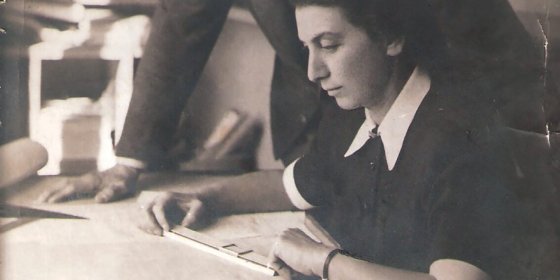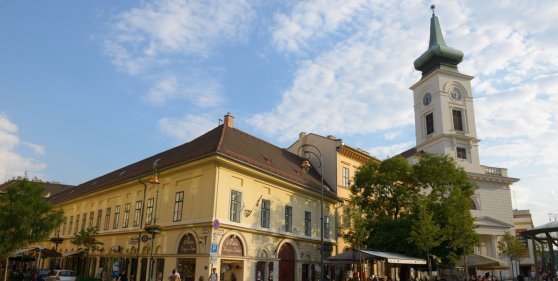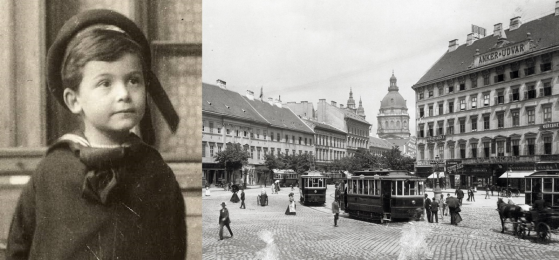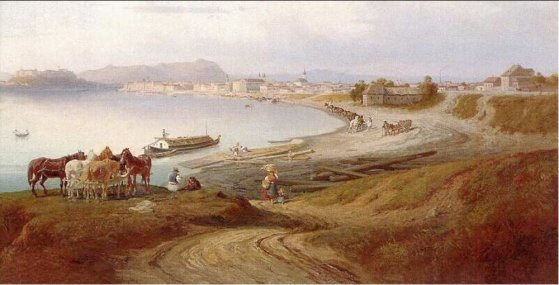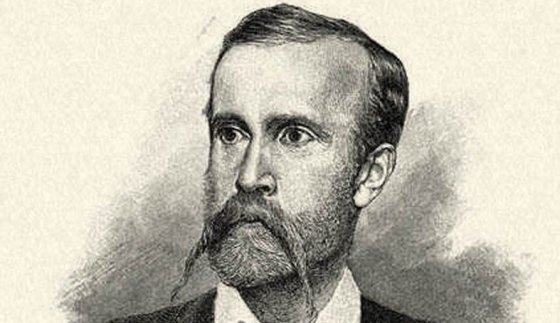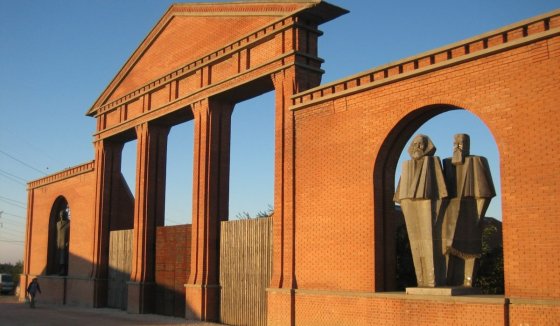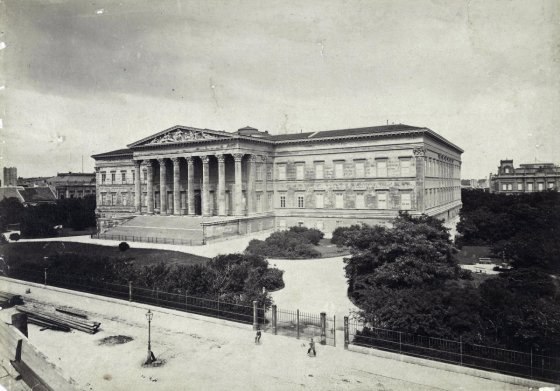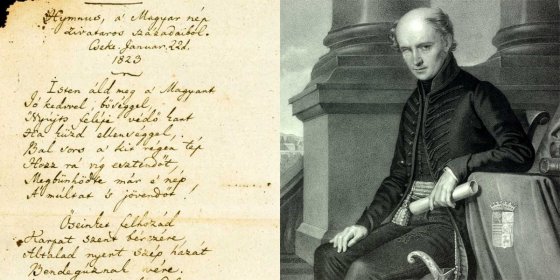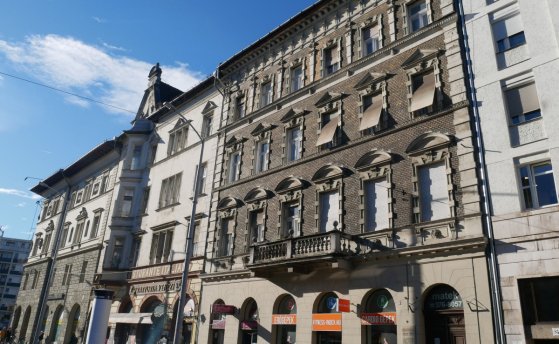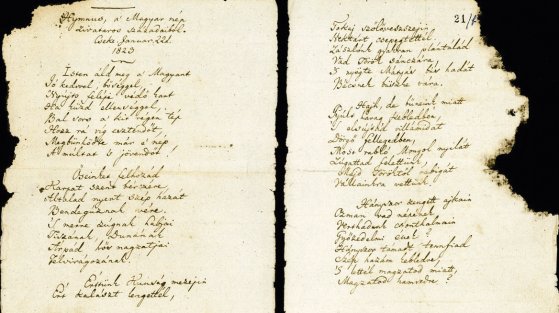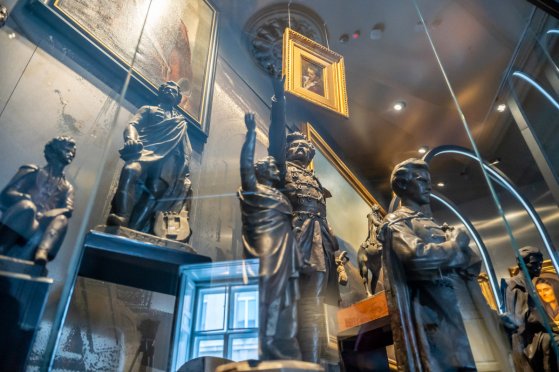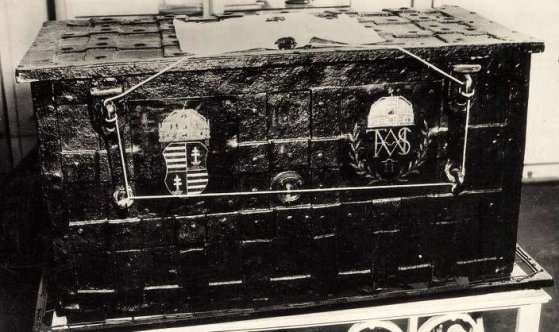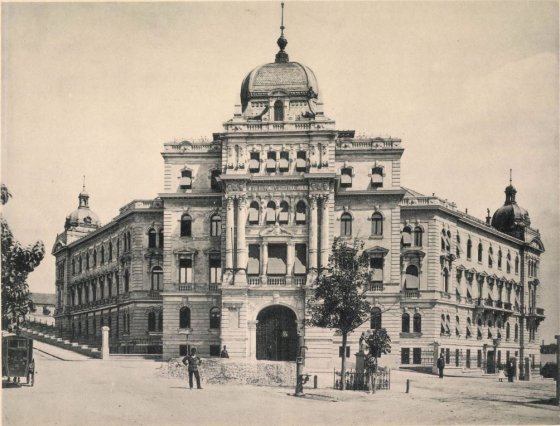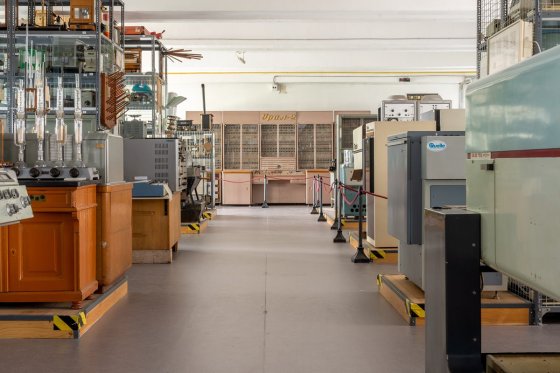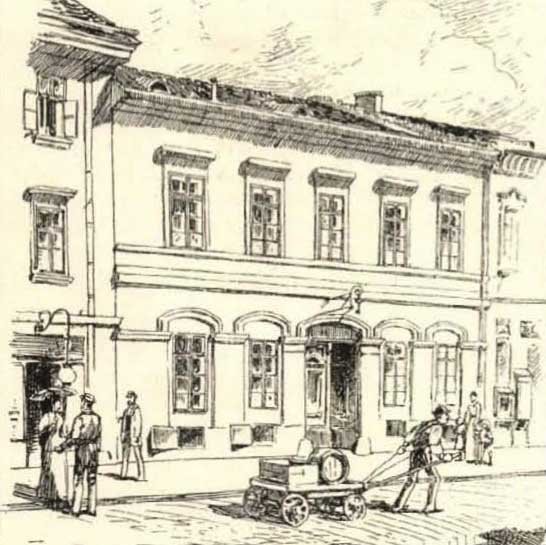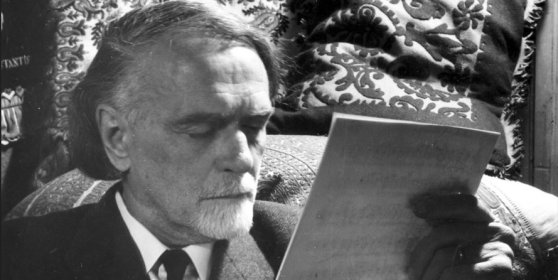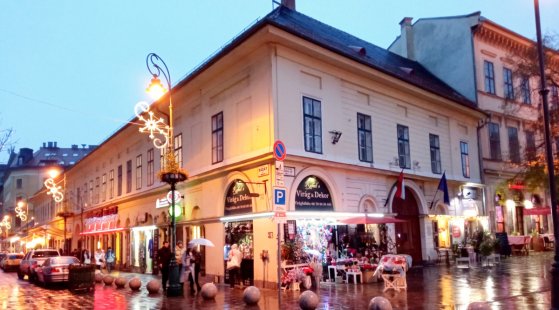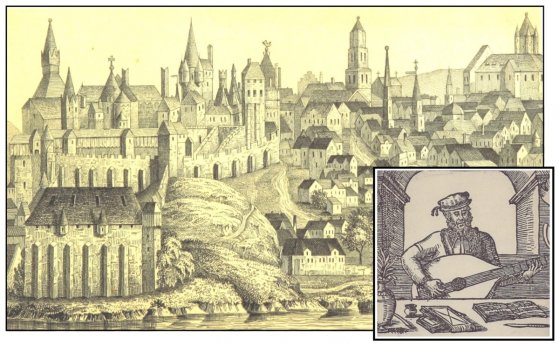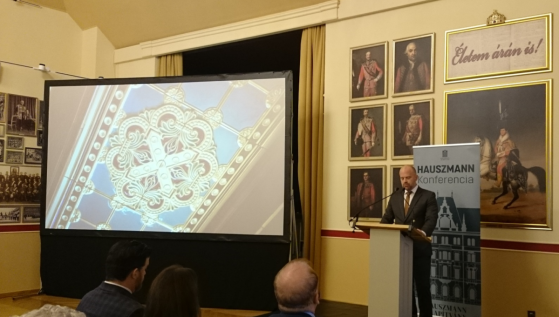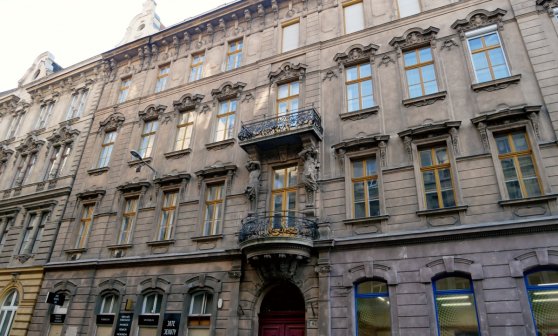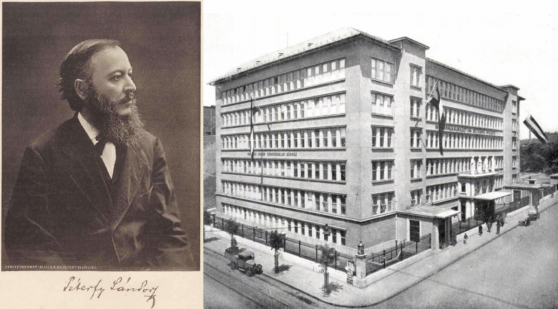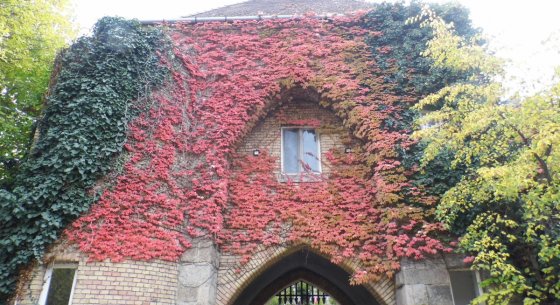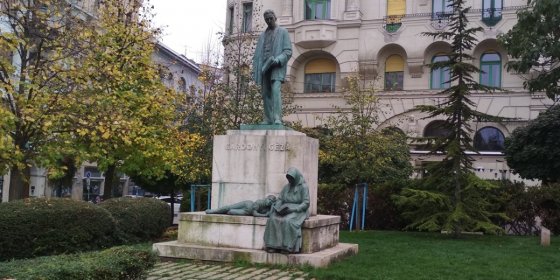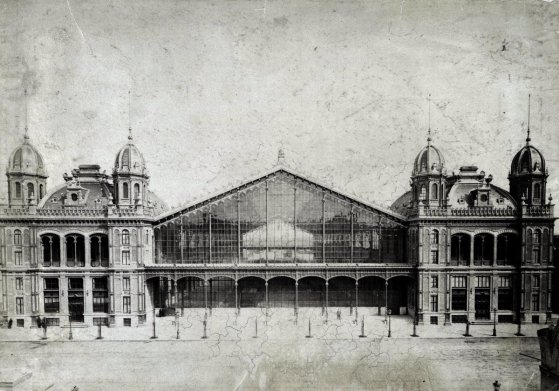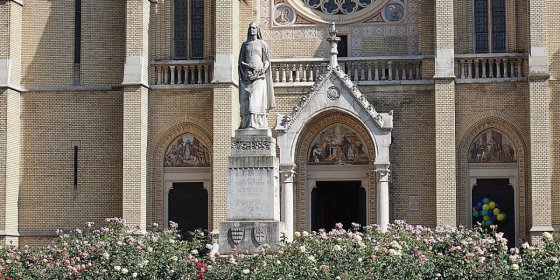 The „intertwined history” of the bridges and the city of Budapest
Which ideas and events have shaped the fate of bridges of Budapest and the cityscape? Alongside many other interesting facts, this question is also answered this newly published book by the Budapest City Archives, which introduces the history of bridges in Budapest.
The „intertwined history” of the bridges and the city of Budapest
Which ideas and events have shaped the fate of bridges of Budapest and the cityscape? Alongside many other interesting facts, this question is also answered this newly published book by the Budapest City Archives, which introduces the history of bridges in Budapest.
Heritage
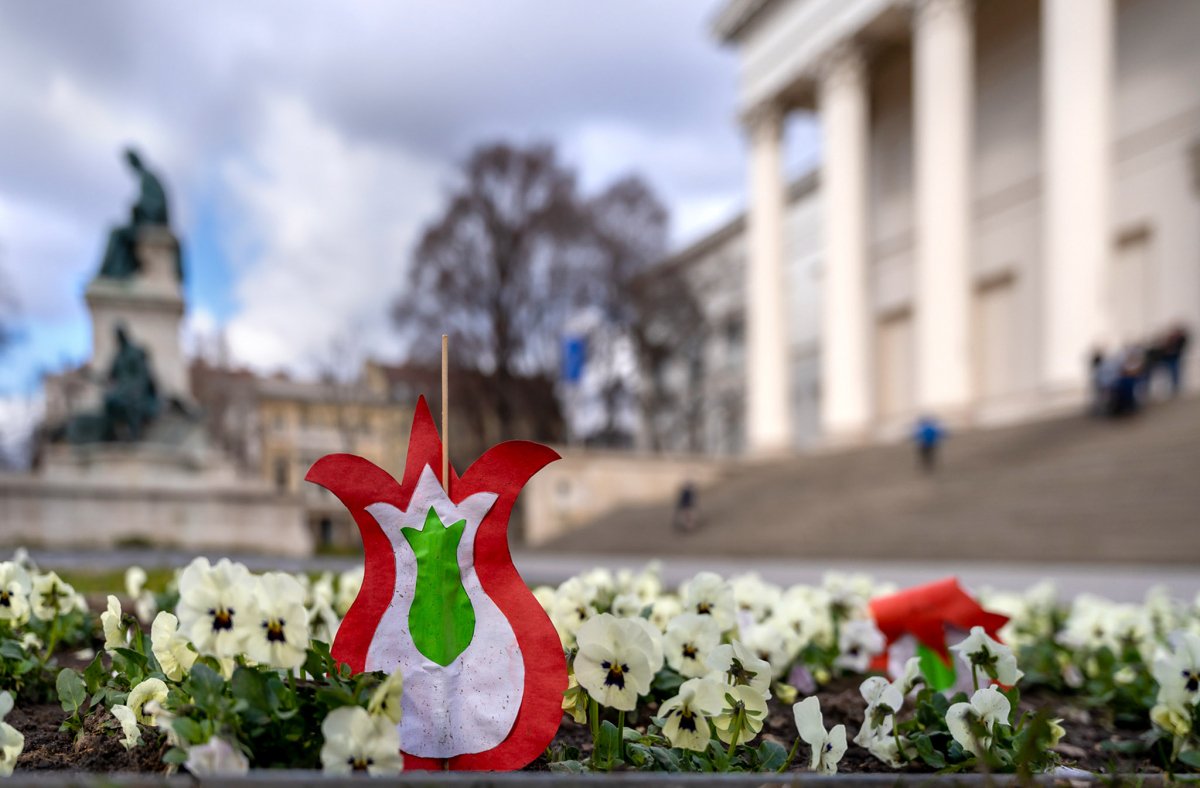 In the footsteps of Petőfi: A walk around the sites of the Revolution of 15 March in Pest and Buda
In the footsteps of Petőfi: A walk around the sites of the Revolution of 15 March in Pest and Buda
March 15, 2023 at 11:00 AM
The sites of the Revolution of 15 March 1848 in Pest and Buda can still be visited today, and even some of the buildings that played an important role in the events are still there: standing in front of the National Museum, the Landerer and Heckenast Printing House, the Locotenential Council and the Táncsics-prison, anyone can recall the events.
The first Hungarian female engineer was born 125 years ago - She wanted to build bridges, roads and railways
March 8, 2023 at 3:00 PM
Eszter Pécsi, the first Hungarian female engineer, received her statics degree at Royal Joseph Polytechnic University on her 22nd birthday, making her the first female graduate engineer in the country. She notes the plans for the statics of the Alfréd Hajós Swimming Pool, but after 1945 she also took part in the revision of the capital's damaged buildings, as well as in the reinforcement work of the cracked roof of the National Theatre. She was responsible for the construction of several villas in the capital, such as the recently renovated Rózsi Walter Villa, which was designed by her husband, József Fischer. In Pestbuda's article, we remember the first Hungarian female engineer.
Károli Gáspár University of the Reformed Church turns 30 years old
February 27, 2023 at 3:00 PM
Thirty years ago, the Synod of the Reformed Church, at its meeting on 24 February 1993, decided to found the Károli Gáspár University of the Reformed Church on the foundations of the Pest Reformed Theological Academy. The choice of name caused some controversy, but his work, the first complete Hungarian Bible translation, was in favour of Gáspár Károli, as it serves as the basis of universal Hungarian culture. University education started at 28 Ráday Street, the former seat of the theological academy, but due to the growing number of students, new locations had to be found. Nowadays, the students of the reformed university can study in such patinated buildings as the Károlyi-Csekonics Palace on Reviczky Street or the former Municipal School for Girls on Aréna Street.
Who also painted the construction of the Chain Bridge: Miklós Barabás died 125 years ago
February 17, 2023 at 12:30 PM
We can confidently say that Miklós Barabás was one of the most outstanding artists of the Reform era, the first painter who earned the respect of society with his artistic work. During his long career, he made portraits of many important and well-known personalities, including Mihály Vörösmarty, János Arany, Ferenc Deák, Palatine Joseph, and even Franz Joseph. The capital also often provided the subject of his pictures. He achieved great success with his paintings, and the press regularly reported on his current works. It was thanks to his exceptional talent that he managed to gain fame at a time when the work of painters was not yet highly valued.
The father of the Lágymányos residential houses, architect József Fischer was born 150 years ago
February 14, 2023 at 12:30 PM
Architect József Fischer was one of the important creators of the large-scale residential house constructions that began at the beginning of the 20th century. His buildings still define the image of Lágymányos. If people walk from the direction of Szent Gellért Square on Bartók Béla Road towards Móricz Zsigmond Square, or walk over to Budafoki Road, from here they turn into Zenta Street, they can see several residential houses that he listed. He designed around 25 houses in the capital, most of which are still standing today. Pestbuda now commemorates József Fischer, who was born 150 years ago.
One of the sharpest-minded Hungarians - The Budapest life of the young János Neumann
February 8, 2023 at 12:30 PM
The world considers him mostly a mathematician, but János Neumann was a great polymath of the 20th century. His achievements affect several scientific fields. He left Budapest when he was young, but his entire childhood was tied here: his excellent education and the years he spent in one of the best Hungarian secondary schools helped develop his brilliant mind. On 8 February, the 66th anniversary of his death, on the occasion of the Neumann Memorial Year announced for 2023, Pestbuda toured the main stations and locations of his life in the capital to recall his mind and personality.
Who painted Pest and Buda several times: Antal Ligeti was born 200 years ago
January 30, 2023 at 4:00 PM
Antal Ligeti, born 200 years ago, was one of the outstanding figures of Hungarian painting. He lived in extraordinary places, first in the Fót castle of Count Károlyi István, later in Budapest's most famous classicist palace: the National Museum building. He owed his first home to the support of the lord, who recognised the talent of the young painter and provided him with housing and board as a patron. He earned his home in the building of the National Museum as the keeper of the picture gallery, lived there for more than twenty years, and was taken to the cemetery from there.
Imre Madách, born 200 years ago, became a writer in Pest
January 28, 2023 at 9:00 AM
The young Imre Madách lived in Pest for three years. While completing his law studies at the University of Pest, he also got involved in social and cultural life. He regularly visited the performances of the Hungarian Theatre of Pest, attended concerts at the National Casino, but the highly educated young man also learned to paint, fence, and play the piano in the capital. His first volume was published here. Pestbuda remembers Imre Madách, who was born 200 years ago.
Memento Park has been classified as one of the most endangered heritage sites in Europe
January 26, 2023 at 1:00 PM
The European heritage protection organisation Europa Nostra and the European Investment Bank Institute have selected 11 European heritage sites, seven of which could be included in the program to help save European heritage. The Memento Park in Budapest and the building of the Ottó Herman Museum in Miskolc are also on the list of must-be-saved sites.
It became the most important work of classicist architecture: the new National Museum opened its doors to the public 175 years ago
January 24, 2023 at 5:00 PM
When the country's most important classicist building, the National Museum designed by Mihály Pollack, was completed in 1847, it took time to properly house the artefacts and books collected over the decades and to create the exhibition spaces. The classicist palace opened to the public 175 years ago, on 24 January 1848, but at that time no one thought that in less than two months the building would become the scene of events that would make it a national symbol forever.
Stormy centuries: the lines of the 200-year-old National Anthem are still relevant today
January 22, 2023 at 2:00 PM
When Ferenc Kölcsey finalised the manuscript of the National Anthem on 22 January 1823, no one would have thought that the poem would one day become one of Hungary's national symbols. Now, 200 years later, in times of successive crises, Hungarians can once again feel that they have already suffered not only for all the sins of the past but also of the future. The lines of the National Anthem are as relevant today as they were at the dawn of the reform era.
The house on József Boulevard, where Feri Neumann became Ferenc Molnár
January 20, 2023 at 10:00 AM
Ferenc Molnár, who was born 145 years ago this January, is one of the most well-known and beloved figures in Hungarian literary history abroad. Pestbuda also wrote about him several times in connection with his novels, dramas and connections to the capital. The writer's own life was also like a novel, full of twists and turns, successes and failures. The house on József Boulevard, which was built by his father and where he lived for the longest time in the capital, was the most important symbol of permanence.
The birthday of the National Anthem: the Ministry of Culture invites people to a joint recitation
January 16, 2023 at 12:30 PM
On the Day of Hungarian Culture, 22 January, on the 200th anniversary of the National Anthem, 200 children, 100 from the motherland and 100 from abroad, will recite Hungary's national poem on the main steps of the Parliament. At the same time, one of the most important Hungarian poems of all time will be recited in four locations across the border, as well as in Ferenc Kölcsey's former residence, Szatmárcseke, and in Veszprém, which has been awarded the title of European Capital of Culture.
The new Petőfi exhibition opened at the PIM addresses the 21st-century people
January 14, 2023 at 2:30 PM
In honour of Petőfi, who was born 200 years ago, a new, large-scale permanent exhibition opened today, 14 January, at the Petőfi Literary Museum (PIM). The institution's undisclosed goal was to bring the poet's work closer to the people of the 21st century, to our everyday lives: the importance of home, the importance of friends or the sacrifice made for our loved ones are all topics that we can easily identify with. Artefacts, special scenery and multimedia tools also help us to get familiar with the work of the poet. Topics that are still relevant today, in Petőfi's interpretation.
Hidden in the Strong Room - This is how the Holy Crown was kept in Buda Castle
January 9, 2023 at 1:30 PM
Today, it is taken for granted that anyone can view the Holy Crown of Hungary. But for centuries it was stored in a closed chest with iron straps, protected by keys and seals, and could only be taken out on special holidays, such as the coronation in 1867, the millennium celebration in 1896 or the Eucharistic Congress in 1938. On the occasion of the return of the fearfully guarded national treasure 45 years ago, Pestbuda presents the conditions under which the crown was guarded in Buda Castle.
The headquarters of the Hungarian Central Statistical Office is 125 years old
January 3, 2023 at 3:30 PM
The Hungarian Royal Central Statistical Office was established in 1871. For a long time, the institution did not have an independent home and was constantly forced to move. The turning point occurred in 1896 when a legal article was published on the construction of the independent building. The plans were prepared by the renowned architect and university professor Győző Czigler. The handover of the new headquarters took place on 18 December 1897, but the staff of the office only took possession of the building in January 1898.
The Museum of Technology was founded three times - Unparalleled Hungarian memories are preserved in the collection created 50 years ago
January 2, 2023 at 5:00 PM
Fifty years ago, the Hungarian Museum of Technology was founded for the third time. According to the founding document dated 1 January 1973, its task is to collect and present Hungarian natural science and technical memorabilia. The museum preserves such special treasures as Ányos Jedlik's electric motor created in 1828 and his electric car made in 1855, the world's first carburettor engine, the first Hungarian computer and the very first Gömböc.
This is how Sándor Petőfi and Júlia Szendrey lived in Pest after their honeymoon
January 1, 2023 at 6:30 PM
Sándor Petőfi, who became a young, patriotic poet, moved from sublet to sublet in Pest in the early 1840s, but love and marriage changed his life: he went from subtenant to main tenant. Pestbuda recalls these locations on the 200th anniversary of the birth of the great national poet, showing in which street, in which house, and under what conditions he lived with his young wife after the marriage and the honeymoon.
"Life without music is incomplete and not worth living", said Zoltán Kodály who was born 140 years ago
December 18, 2022 at 11:00 AM
Zoltán Kodály is one of the greatest figures in Hungarian music literature, who was not only an exceptionally talented composer but also a researcher and teacher. He began his work as a folk song collector in 1905 and presented his own works to the public in 1910, and Psalmus Hungaricus, written in 1923, was a huge international success. His music pedagogy method is still used in education today. The composer's former home on Kodály Körönd now houses the memorial museum named after him.
The oldest building in Ferencváros stands on Kálvin Square - The story of the former Két Oroszlán Inn
December 13, 2022 at 11:00 AM
The house at 9 Kálvin Square is the oldest building not only on the square but also in the capital's 9th District that is still standing today. In the past two centuries, it has been through many things, it has been used for many things, but the most important thing is that it was used and this not very large, but cultural-historically significant building of Pest classicist architecture has survived.
A world star raised in Buda in the Middle Ages - memories of Bálint Bakfark and the street named after him
December 12, 2022 at 9:00 AM
In the heyday of the Renaissance, a lute artist educated in Buda went on a European tour to impress the rulers and noble courts of the continent with his brilliant music, even generating sympathy for the cause of the Kingdom of Hungary, which was languishing under the threat of the Ottoman Empire. As a student, Bálint Bakfark was able to see Buda just before the long Turkish occupation. His memory is preserved today by a small street, next to which the medieval city wall stretched.
The Ludovica Academy: 150 years of Hungarian officer training
December 4, 2022 at 11:00 AM
One hundred and fifty years ago, in 1872, the Ludovica Academy, the military school for the training of officer cadets, was opened. The 1808 Diet decided to start Hungarian officer training, but the education actually started only 64 years later. The academy's own building in the 8th District was already built between 1830 and 1836 from public donations, according to the plans of Mihály Pollack, but the classicist palace was unused for decades. However, a law of 1872 once again ordered the establishment of the Hungarian Royal Hungarian Defense Academy.
In the footsteps of Endre Thék, Miksa Róth, and Gyula Jungfer - Turn-of-the-century fine art and crafts will be taught again
November 26, 2022 at 1:00 PM
In Budapest, several of the previously destroyed buildings of historical importance have been recreated in recent years, but due to the lack of skilled craftsmen, the implementation was a huge challenge. The reconstructions currently underway and planned in the future will be helped by the fact that starting next year, a training course will be launched in which these crafts, which also require artistic talent, can be mastered at a high level - it was announced at the Hauszmann Foundation's conference in Buda Castle on Thursday.
The house where Kálmán Mikszáth regained his zest for life
November 16, 2022 at 9:00 AM
Lovers of literature must have thought many times about the circumstances under which a masterpiece of their favourite author was born. In what environment was that particular poem or novel written, in what state of mind was the poet or writer, did he work in a coffee house, or did he write down the famous lines and sentences at home, or sitting in the open air, in the shade of a tree. Pestubda now presents Kálmán Mikszáth's home on Lónyay Street, where the writer wrote several novels.
The speeches would have lasted four weeks if everyone had had the floor at the inauguration of the Kossuth Statue
November 6, 2022 at 1:30 PM
Sixty thousand people showed up at the inauguration of the Kossuth Statue that day, wreaths were laid by the country's top leaders, representatives of Hungarian settlements, the delegation of the United States and the city of Turin, representatives of countless foreign countries, but the Catholic Church was left out, and members of the Czechoslovak, Yugoslav, and Romanian embassy did not participate either. The monument was inaugurated 95 years ago today, on 6 November 1927, but the event was accompanied by huge controversies.
From the Father of teachers to the hospital of the revolution - Sights of Péterfy Sándor Street
November 4, 2022 at 9:00 AM
Péterfy Sándor Street is one of the characteristic streets of Külső-Erzsébetváros, the so-called Csikágó [Chicago, written as it is pronounced in Hungarian] quarter. It owes its fame mostly to its hospital and the events that took place there in 1956, but its namesake, the Hungarian "Father of teachers", also lived here. Its characteristic streetscape consists of residential buildings with circular corridors built during the Dualism, but it is also in contact with the country's first official kindergarten teacher training institute, a former brewery warehouse and a former market square. Take a look at what this street is all about.
Art Nouveau on tombstones - An attempt to renew cemetery art
November 2, 2022 at 10:00 AM
Around the Day of the Dead, many of us visit the graves of our loved ones, and at this time we can discover that the cemetery is also a repository of real works of art. At the beginning of the 20th century, Art Nouveau, which broke with classical forms, permeated this area as well, and artists tried to offer new solutions to those who ordered tombstones. One of the most enthusiastic of them was the sculptor Richárd Füredi, who together with two of his colleagues organised an exhibition to introduce his works reflecting the new taste to the general public.
The hermit of Eger was a regular guest of Pest's coffee houses - Géza Gárdonyi died a hundred years ago
October 30, 2022 at 10:00 AM
Although his name lives on in the public consciousness as a hermit of Eger, Géza Gárdonyi was a regular figure in the cultural and literary life of Budapest at the turn of the 19th century. He was an eyewitness to the development of the city, as a journalist he reported for years from the Old House of Representatives, he visited the famous artist's salon of the Fesztys, but he was also considered a regular guest at the Centrál, the Valéria or the New York Café. Pestbuda now remembers Géza Gárdonyi, who died 100 years ago today.
The railway station that was cut in two
October 29, 2022 at 11:00 AM
By the beginning of the 1870s, the first railway station in Pest - the predecessor of Nyugati (Western), then known as Pest Station Building - was no longer able to handle the ever-increasing railway traffic smoothly. The owner railway company started the expansion, but then it turned out that the building stood in the way of the planned Outer Ring Road. Therefore, the old hall was "halved" and a new railway station was built over its northern part. The Nyugati Railway Station, as it is known today, was handed over on 28 October 1877, i.e., 145 years ago.
Sculptor József Damkó was born 150 years ago - His works can be admired all over the capital
October 17, 2022 at 2:00 PM
Undeservedly little is said about sculptor József Damkó, even though the artist produced many works that stand at important points in the Hungarian capital. Such is the statue of Saint Elizabeth of the House of Árpád on Rózsák Square, the statue of St. John of Capistrano on Kapisztrán Square in Buda Castle or the statue of Pope Innocent XI on Hess András Square. His architectural sculptures and tombstones are also of considerable value. Pestbuda now presents the Budapest works of József Damkó on the 150th anniversary of his birth.
More articles
 The „intertwined history” of the bridges and the city of Budapest
Which ideas and events have shaped the fate of bridges of Budapest and the cityscape? Alongside many other interesting facts, this question is also answered this newly published book by the Budapest City Archives, which introduces the history of bridges in Budapest.
The „intertwined history” of the bridges and the city of Budapest
Which ideas and events have shaped the fate of bridges of Budapest and the cityscape? Alongside many other interesting facts, this question is also answered this newly published book by the Budapest City Archives, which introduces the history of bridges in Budapest.
 The Bridge Report, which brought a turning point in the history of Budapest
A travel report that changed the history of Pest and Buda, as well as Hungary. The little book contributed to the change of half a thousand years of legal customs and the implementation of an investment of unprecedented size and technical quality. This book was The Bridge Report [Hídjelentés in Hungarian].
The Bridge Report, which brought a turning point in the history of Budapest
A travel report that changed the history of Pest and Buda, as well as Hungary. The little book contributed to the change of half a thousand years of legal customs and the implementation of an investment of unprecedented size and technical quality. This book was The Bridge Report [Hídjelentés in Hungarian].
 Drama on the university wall - The heroic monument was planned 95 years ago
In the constant hustle and bustle of the Egyetem Square in Pest, the students may not even notice the monument that decorates the short section of wall between the church and the central building of ELTE. However, it commemorates their predecessors, the heroes who fought for their country in World War I, and those who heroically helped them. The first design of the dramatically collapsing soldier was born in 1928, ninety-five years ago.
Drama on the university wall - The heroic monument was planned 95 years ago
In the constant hustle and bustle of the Egyetem Square in Pest, the students may not even notice the monument that decorates the short section of wall between the church and the central building of ELTE. However, it commemorates their predecessors, the heroes who fought for their country in World War I, and those who heroically helped them. The first design of the dramatically collapsing soldier was born in 1928, ninety-five years ago.

